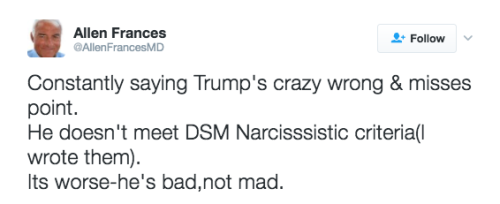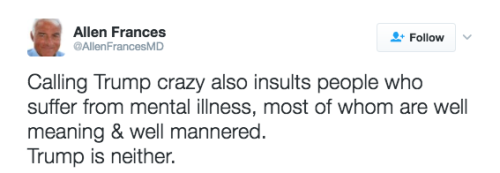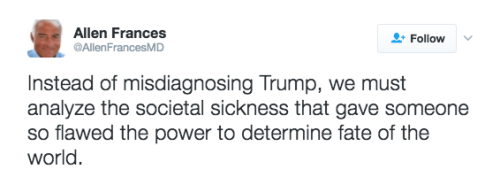In One Of The Most Hostile Regions Known To Humankind, Conservationists Unearthed An Ice-covered Fruitcake


In one of the most hostile regions known to humankind, conservationists unearthed an ice-covered fruitcake they believe once belonged to the British explorer Robert Falcon Scott, the New Zealand-based Antarctic Heritage Trust said this past week.
The age of the fruitcake: 106 years old.
A program manager said it was in “excellent condition.”
And the trust said it smelled “almost” edible.
The cake, dating to the Cape Adare-based Northern Party of Scott’s Terra Nova expedition (1910-13), was found in Antarctica’s oldest building, which was constructed by a Norwegian explorer’s team in 1899 and used by Scott’s team in 1911, the trust said.
(Read more at NYT)
More Posts from Philosophical-amoeba and Others




The Origin of Species by Means of Natural Selection or the Preservation of Favoured Races in the struggle for life Charles Darwin
London John Murray Sixth Edition with additions and corrections (Forty Third Thousand) The sixth edition [shown here] (first printed in 1872) - is the edition in which the word “evolution” was used for the first time (although Darwin used this term in the Descent of Man, published a year before; in 1871). This edition was also the last that Charles Darwin revised during his lifetime, including the addition of an entirely new chapter. In 1876 Darwin added a few small corrections, and all subsequent printing were copies of that printing.
a clean tight fresh presentable copy - which remains largely unread - even after 124 years - a large portion of the book remains unopened [the leaves of the book remain joined at the folds; not slit apart]






The psychiatrist who wrote the criteria for narcissism just made an extremely important point about what’s wrong with diagnosing Trump with mental disorders
Dr. Allen Frances says in speculating about Trump’s mental health, we are doing a disservice to those who do suffer from mental illness. In a series of tweets, he explained why he doesn’t think Trump is a narcissist — and how harmful it can be for us to keep assuming that he is.
Joan Beauchamp Procter: her best friend was a Komodo dragon and if that doesn’t entice you to read this, I don’t know what will
Joan Beauchamp Procter is a scientist every reptile enthusiast should admire.

Joan was an incredibly intelligent young woman who was chronically ill (and as a result of her chronic illness, physically disabled by her early thirties). Her health issues kept her from going to college, but that did not stop her from studying and keeping reptiles. She presented her first paper to the Zoological Society of London at the tender age of nineteen, and the society was so impressed that they hired her to help design their aquarium. In 1923, despite having no formal secondary education and despite being only 26 years old, she was hired as the London Zoo’s curator of reptiles. Now, that in and of itself is an awesome accomplishment, but Joan was absolutely not content to maintain the status quo. Nosiree, by the age of 26 Joan had already kept many exotic pets (including a crocodile!) and knew a thing or two about what needed to be done to improve their lives in captivity. So Joan got together with an architect, Edward Guy Dawber, and designed the world’s first building designed solely for the keeping of reptiles. She had some really, really great ideas. Her first big idea was to make the building differentially heated- different areas and enclosures would have different heat zones, instead of having the whole building heated to one warm temperature. She also set up aquarium lighting- the gallery itself was dark, with dim lights on individual enclosures to make things less stressful for the inhabitants. She also insisted on the use of special glass that didn’t filter out UVB. This meant that reptiles could synthesize vitamin D and prevented cases of MBD in her charges.

But advances in enclosure design weren’t Joan’s only contribution to reptile keeping. She was also one of the first herpetologists to study albinism in snakes- she was the first to publish an identification how albinism manifests in reptile eyes differently than in mammal eyes, and stressed the importance of making accurate color plates of reptiles during life because study specimens often lose pigmentation. She also was really hands-on with many species, including crocodiles, large constrictors, and monitor lizards. Joan had this idea that if you socialize an animal and get it used to handling, then when you need to give it a vet checkup, things tend to go a lot better. This really hadn’t been done with reptiles before. She was able to identify many unstudied diseases, thanks to her patient handling of live specimens, and by being patient and going slow, she managed to get a lot of very large, dangerous creatures to trust her. One of them (that we know of) even came to like her- a Komodo dragon named Sumbawa.

In 1928, two of the first Komodo dragons to be imported to Europe arrived at the London Zoo. One of them, named Sumbawa, came in with a nasty mouth infection. His first several months at the zoo were a steady stream of antibiotics and gentle care, and by the time he’d recovered enough for display, he had come to be tolerant of handling and human interaction. In particular, he seemed to be genuinely fond of Joan. She was their primary caretaker and wrote many of the first popular accounts of Komodo dragon behavior in captivity. While recognizing their lethal capacity, she also wrote about how smart they are and how inquisitive they could be. In her account published in The Wonders of Animal Life, she said that "they could no doubt kill one if they wished, or give a terrible bite" but also that they were “as tame as dogs and even seem to show affection.” To demonstrate this, she would take Sumbawa around on a leash and let zoo visitors interact with him. She would also hand-feed Sumbawa- pigeons and chickens were noted to be favorite food, as were eggs.
Joan died in 1931 at the age of 34. By that time she was Doctor Procter, as the University of Chicago had awarded her an honorary doctorate. Until her death, she still remained active with the Zoological Society of London- and she was still in charge of her beloved reptiles. Towards the end of her life, Joan needed a wheelchair. But that didn’t stop her from hanging out with her giant lizard friend. Sumbawa would walk out in front of the wheelchair or beside it, still on leash- she’d steer him by touching his tail. At her death, she was one of the best-known and respected herpetologists in the world, and her innovative techniques helped shape the future of reptile care.

Entanglement Made Simple, a divulgative article of theoretical physicist and Nobel laureate Frank Wilczek, in Quanta Magazine.
Image by James O'Brien for Quanta Magazine
Complex learning dismantles barriers in the brain
Biology lessons teach us that the brain is divided into separate areas, each of which processes a specific sense. But findings published in eLife show we can supercharge it to be more flexible.

Scientists at the Jagiellonian University in Poland taught Braille to sighted individuals and found that learning such a complex tactile task activates the visual cortex, when you’d only expect it to activate the tactile one.
“The textbooks tell us that the visual cortex processes visual tasks while the tactile cortex, called the somatosensory cortex, processes tasks related to touch,” says lead author Marcin Szwed from Jagiellonian University.
“Our findings tear up that view, showing we can establish new connections if we undertake a complex enough task and are given long enough to learn it.”
The findings could have implications for our power to bend different sections of the brain to our will by learning other demanding skills, such as playing a musical instrument or learning to drive. The flexibility occurs because the brain overcomes the normal division of labour and establishes new connections to boost its power.
It was already known that the brain can reorganize after a massive injury or as a result of massive sensory deprivation such as blindness. The visual cortex of the blind, deprived of its input, adapts for other tasks such as speech, memory, and reading Braille by touch. There has been speculation that this might also be possible in the normal, adult brain, but there has been no conclusive evidence.
“For the first time we’re able to show that large-scale reorganization is a viable mechanism that the sighted, adult brain is able to recruit when it is sufficiently challenged,” says Szwed.
Over nine months, 29 volunteers were taught to read Braille while blindfolded. They achieved reading speeds of between 0 and 17 words per minute. Before and after the course, they took part in a functional Magnetic Resonance Imaging (fMRI) experiment to test the impact of their learning on regions of the brain. This revealed that following the course, areas of the visual cortex, particularly the Visual Word Form Area, were activated and that connections with the tactile cortex were established.
In an additional experiment using transcranial magnetic stimulation, scientists applied magnetic field from a coil to selectively suppress the Visual Word Form Area in the brains of nine volunteers. This impaired their ability to read Braille, confirming the role of this site for the task. The results also discount the hypothesis that the visual cortex could have just been activated because volunteers used their imaginations to picture Braille dots.
“We are all capable of retuning our brains if we’re prepared to put the work in,” says Szwed.
He asserts that the findings call for a reassessment of our view of the functional organization of the human brain, which is more flexible than the brains of other primates.
“The extra flexibility that we have uncovered might be one those features that made us human, and allowed us to create a sophisticated culture, with pianos and Braille alphabet,” he says.

Sleep suppresses brain rebalancing
Why humans and other animals sleep is one of the remaining deep mysteries of physiology. One prominent theory in neuroscience is that sleep is when the brain replays memories “offline” to better encode them (“memory consolidation”). A prominent and competing theory is that sleep is important for re-balancing activity in brain networks that have been perturbed during learning while awake. Such “rebalancing” of brain activity involves homeostatic plasticity mechanisms that were first discovered at Brandeis University, and have been thoroughly studied by a number of Brandeis labs including the Turrigiano lab. Now, a study from the Turrigiano lab just published in the journal Cell shows that these homeostatic mechanisms are indeed gated by sleep and wake, but in the opposite direction from that theorized previously: homeostatic brain rebalancing occurs exclusively when animals are awake, and is suppressed by sleep. These findings raise the intriguing possibility that different forms of brain plasticity – for example those involved in memory consolidation and those involved in homeostatic rebalancing – must be temporally segregated from each other to prevent interference.
The requirement that neurons carefully maintain an average firing rate, much like the thermostat in a house senses and maintains temperature, has long been suggested by computational work. Without homeostatic (“thermostat-like”) control of firing rates, models of neural networks cannot learn and drift into states of epilepsy-like saturation or complete quiescence. Much of the work in discovering and describing candidate mechanisms continues to be conducted at Brandeis. In 2013, the Turrigiano Lab provided the first in vivo evidence for firing rate homeostasis in the mammalian brain: lab members recorded the activity of individual neurons in the visual cortex of freely behaving rat pups for 8h per day across a nine-day period during which vision through one eye was occluded. The activity of neurons initially dropped, but over the next 4 days, firing rates came back to basal levels despite the visual occlusion. In essence, these experiments confirmed what had long been suspected – the activity of neurons in intact brains is indeed homeostatically governed.
Due to the unique opportunity to study a fundamental mechanism of brain plasticity in an unrestrained animal, the lab has been probing the possibility of an intersection between an animal’s behavior and homeostatic plasticity. In order to truly evaluate possible circadian and behavioral influences on neuronal homeostasis, it was necessary to capture the entire 9-day experiment, rather than evaluate snapshots of each day. For this work, the Turrigiano Lab had to find creative computational solutions to recording many terabytes of data necessary to follow the activity of single neurons without interruption for more than 200 hours. Ultimately, these data revealed that the homeostatic regulation of neuronal activity in the cortex is gated by sleep and wake states. In a surprising and unpredicted twist, the homeostatic recovery of activity occurred almost exclusively during periods of activity and was inhibited during sleep. Prior predictions either assumed no role for behavioral state, or that sleeping would account for homeostasis. Finally, the lab established evidence for a causal role for active waking by artificially enhancing natural waking periods during the homeostatic rebound. When animals were kept awake, homeostatic plasticity was further enhanced.
This finding opens doors onto a new field of understanding the behavioral, environmental, and circadian influences on homeostatic plasticity mechanisms in the brain. Some of the key questions that immediately beg to be answered include:
What it is about sleep that precludes the expression of homeostatic plasticity?
How is it possible that mechanisms requiring complex patterns of transcription, translation, trafficking, and modification can be modulated on the short timescales of behavioral state-transitions in rodents?
And finally, how generalizable is this finding? As homeostasis is bidirectional, does a shift in the opposite direction similarly require wake or does the change in sign allow for new rules in expression?

Ornithorhynchus anatinus - Detail of Bill
The monotremes (egg-laying mammals) are the only mammalia with any sort of electroreception ability, and the platypus’ ability is far stronger than that of the echidna. They use neither sight nor smell while hunting for their food, which consists of small crustaceans and molluscs buried in lakes and slow-moving river bottoms. The platypus finds its food by sweeping its broad bill back and forth along the sediment, and the receptors that line the front and part of the sides of the bill pick up the electric field given off by its prey. It then uses its paws (with the flipper-ish part folded back) to dig out its snack.
Illustrations from the Proceedings of the Zoological Society of London, Vol. I: Mammalia. 1848-1860.

No. 2 Construction Battalion
Fighting for a country that didn’t want them.
On March 25 1917, Canada’s first and only black military unit left Halifax harbor for the Western Front. Six hundred soldiers, mostly from Nova Scotia, formed up as No. 2 Construction Battalion. Many had been trying to enlist since 1914, but winning this privilege had been an up-hill fight: for two years military authorities had turned down black recruits, telling them “This is a white man’s war.”
Finally, in 1916, Canada allowed black recruits entry into a segregated united of laborers. An additional 165 African-Americans crossed the border to join them, creating a full complement of 600 men. Winning the struggle to join up hardly ended discrimination. Except for the reverend, all officers were white, and even when they went to board their transport ship on March 25 the captain initially refused to let them on, saying that he would not let them travel on the same vessel as white soldiers.

The recruits hoped to be allowed to fight when they reached France, but instead the Canadian Expediotnary Force immediately downgraded them from a battalion to a company and assigned them to fell trees and prepare positions for white soldiers. They were not ever even issued with rifles. Their work was tedious and demoralizing, and many considered themselves failures even as they suffered casualties from artillery shells and poison gas.
The unit returned to Canada in 1919, but received no fanfare upon arrival. Much like America’s black soldiers, they returned to a country that did not value them or their sacrifice and actively oppressed their rights. Most of these veterans returned to poverty and unemployment. When they finally had their first reunion in 1982, only nine could attend from twenty known survivors. Their legacy and sacrifice has been revived since then. Although very few men were allowed the chance to serve, they began the first crack in the Canadian military’s institutionalized racism.


Drosophila melanogaster (fruit fly) seminal vesicle
Dr. Barbara Laurinyecz
Szeged, Hungary
Technique: Confocal, Fluorescence (600x)
-
 philosophical-amoeba reblogged this · 7 years ago
philosophical-amoeba reblogged this · 7 years ago -
 andylove16-blog1 liked this · 7 years ago
andylove16-blog1 liked this · 7 years ago -
 ramblingsofadetective liked this · 7 years ago
ramblingsofadetective liked this · 7 years ago -
 narodn4 reblogged this · 7 years ago
narodn4 reblogged this · 7 years ago -
 narodn4 liked this · 7 years ago
narodn4 liked this · 7 years ago -
 syneidisi reblogged this · 7 years ago
syneidisi reblogged this · 7 years ago -
 companioncube76 reblogged this · 7 years ago
companioncube76 reblogged this · 7 years ago -
 the-emptyworld liked this · 7 years ago
the-emptyworld liked this · 7 years ago -
 1989ag reblogged this · 7 years ago
1989ag reblogged this · 7 years ago -
 a-hot-cuppa liked this · 7 years ago
a-hot-cuppa liked this · 7 years ago -
 pandora1018 liked this · 7 years ago
pandora1018 liked this · 7 years ago -
 yoojaejin-blog1 liked this · 7 years ago
yoojaejin-blog1 liked this · 7 years ago -
 qui11iam liked this · 7 years ago
qui11iam liked this · 7 years ago -
 kristines-galaxy-of-blackholes liked this · 7 years ago
kristines-galaxy-of-blackholes liked this · 7 years ago -
 i-want-cheese reblogged this · 7 years ago
i-want-cheese reblogged this · 7 years ago -
 ordereduniverse liked this · 7 years ago
ordereduniverse liked this · 7 years ago -
 tanelorn8615 reblogged this · 7 years ago
tanelorn8615 reblogged this · 7 years ago -
 depressedbadlydrawnbedbug liked this · 7 years ago
depressedbadlydrawnbedbug liked this · 7 years ago -
 veilofsunrises liked this · 7 years ago
veilofsunrises liked this · 7 years ago -
 mariconmalo liked this · 7 years ago
mariconmalo liked this · 7 years ago -
 strangerinsidethetardis liked this · 7 years ago
strangerinsidethetardis liked this · 7 years ago -
 aurric liked this · 7 years ago
aurric liked this · 7 years ago -
 toph-cabbage-lord reblogged this · 7 years ago
toph-cabbage-lord reblogged this · 7 years ago -
 roseseafoam liked this · 7 years ago
roseseafoam liked this · 7 years ago -
 gohjah reblogged this · 7 years ago
gohjah reblogged this · 7 years ago -
 santamonicalibr liked this · 7 years ago
santamonicalibr liked this · 7 years ago -
 engineering-girls reblogged this · 7 years ago
engineering-girls reblogged this · 7 years ago -
 deathandmysticism liked this · 7 years ago
deathandmysticism liked this · 7 years ago -
 nextdoriskearns liked this · 7 years ago
nextdoriskearns liked this · 7 years ago -
 heaveninawildflower liked this · 7 years ago
heaveninawildflower liked this · 7 years ago -
 metadata-uber-alles reblogged this · 7 years ago
metadata-uber-alles reblogged this · 7 years ago -
 xixichelth liked this · 7 years ago
xixichelth liked this · 7 years ago -
 whacky-doughnut liked this · 7 years ago
whacky-doughnut liked this · 7 years ago -
 sgeoffa liked this · 7 years ago
sgeoffa liked this · 7 years ago
A reblog of nerdy and quirky stuff that pique my interest.
291 posts

